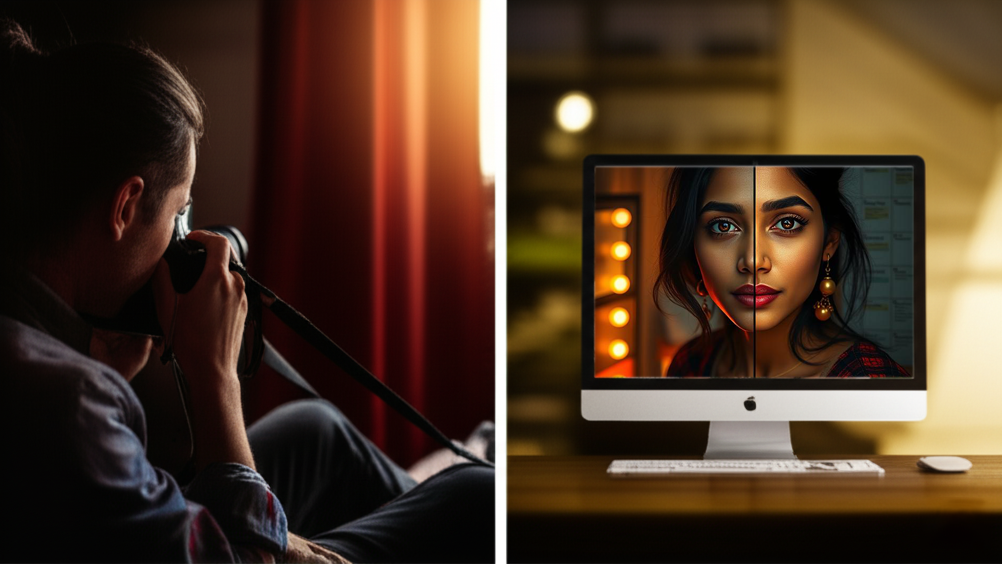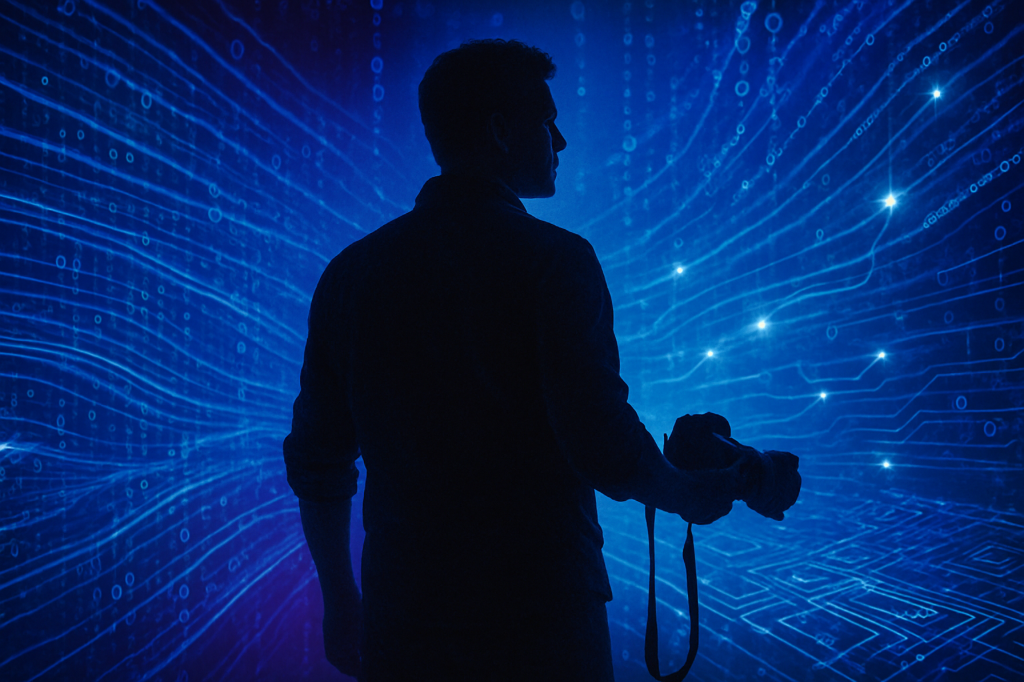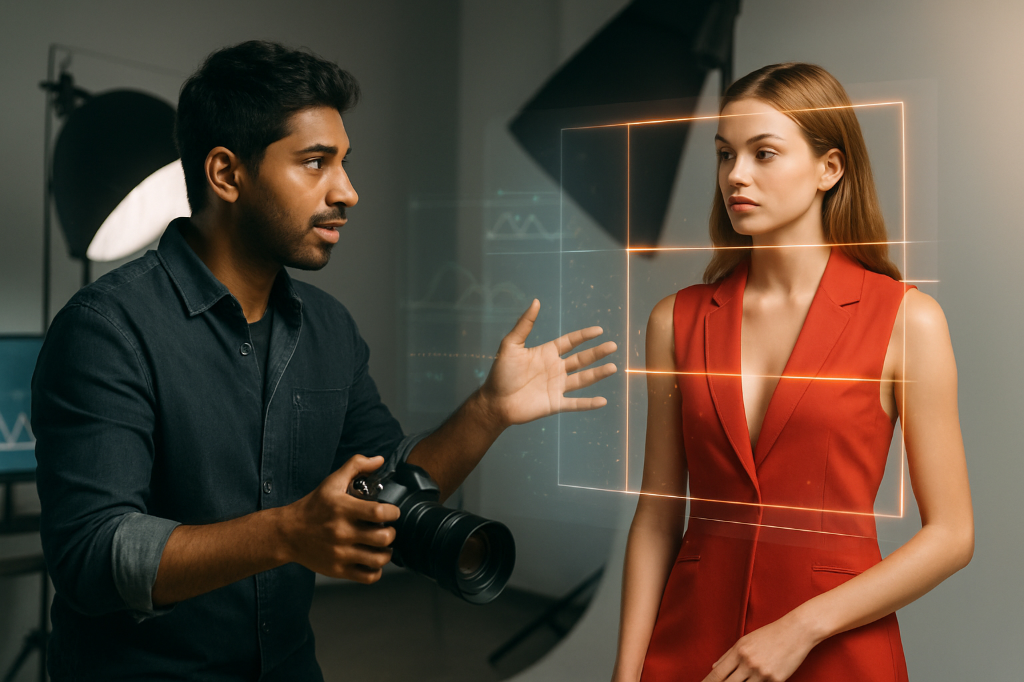Hi, this is Ranjan Bhattacharya, a fashion photographer from the bustling lanes of Kolkata. For almost three decades now, my world has revolved around the click of a camera, the perfect drape of fabric, the glint in a model’s eye. It’s all about creating magic, right? But lately, everywhere I look, from Park Street cafes to industry seminars, there's one word buzzing around: AI. Artificial Intelligence. Bhalo na kharap? (Good or bad?) Will AI replace wedding photographers? Is this the end of our beautiful art, or something new?
My answer, unequivocal and heartfelt, is NO.
This isn't a death knell for photography; it's a tectonic shift. And like any significant change, it brings both challenges and immense opportunities. As photographers, especially those of us who have weathered many technological storms – from film to digital, from darkroom to Photoshop – we need to understand this beast, tame it, and ultimately, ride its wave. This article isn't about fearing AI; it's about preparing, adapting, and innovating so we can not just survive, but truly thrive in this new landscape.
Understanding the Beast: Where AI Stands in Creative Services Today

Now, let's talk about what AI is actually doing in our space. Many of you have heard of generative tools like Midjourney or DALL-E, and frankly, my jaw dropped when I first saw what they could create. Beyond generating initial concepts, photographers are constantly searching for the best AI tools for photo editing to speed up their workflow. For years, my team has spent hours perfecting retouching for high-end fashion campaigns, and suddenly, AI tools like Luminar Neo or Topaz Photo AI promise to handle tasks like skin smoothing or object removal in a fraction of the time. Chhilo na? (Isn't it amazing/surprising?) I've experimented with them – not to replace my artists, but to make our workflow faster, especially on those tight commercial deadlines. It's like having another assistant in my studio, but this one never asks for chai!
Then there are the generative game changers. I typed "fashion show, vibrant Indian colours, Kolkata backdrop" into one of these text-to-image generators, and boom! – an image appeared. It was fascinating, but lacked the soul, the bhaav, of a real person. It's a powerful tool for initial mood boards or creating quick mock-ups for clients, no doubt. But to capture the spirit of a collection, the true emotion of a model, or the dynamic energy of a live fashion show, you still need a human eye and a human heart. And now, we're seeing AI video tools like Sora and RunwayML creating entire clips from text. It's mind-boggling how fast this technology is evolving.
And the funny thing is, as AI gets better at creating human-like content, people want to know if it's real or not. It's this paradox – everyone is using AI, but everyone also wants something truly human. I’ve even been checking my own writing, just to be sure it sounds like me! It shows that authenticity still carries immense value in our world. Google, and your audience, are increasingly looking for genuine, human-crafted narratives and visuals.
The Inevitable Impact: Where Do We Stand?
AI is already impacting our industry in several ways, and we need to be aware of them. I've heard some whispers in the industry – clients asking about cheaper, AI-generated options for basic needs like stock photos or quick mock-ups. It’s true, if AI can flawlessly retouch skin or handle basic culling, the value of just that simple skill might diminish. This could mean increased competition, especially at the entry level.
However, as a professional, I see it differently for the kind of work my team and I do. For those high-end advertising campaigns, the ones you see on my 'About Us' page – where every detail, every emotion needs to be perfect – AI is an assistant, not a replacement. It helps us deliver faster, yes, but the real artistic direction? That’s still ours. The ethical questions are also big, you know? Who owns an AI-generated image? How do we ensure fair use and prevent AI from learning from our copyrighted work without permission? These are complex legal and ethical minefields we're just beginning to navigate as an industry, and we, as artists, need to be part of that discussion.
Navigating AI: A Photographer's Path to Preparedness

Alright, enough worrying. As someone who's spent decades perfecting this art, I believe we don't just survive; we thrive. Here’s how I see it, based on my own journey and what I tell my younger colleagues in Kolkata:
1. Become the Maestro of the Machine (and the Prompts)
Remember how we all had to learn digital cameras after film? This is similar. I’ve been experimenting with these AI tools like crazy – Midjourney, Luminar Neo, even those video generators like Pika and Sora. It’s like learning a new lens or a new lighting technique.
For instance, on a high-volume product shoot, where we need hundreds of variations for an e-commerce giant, AI can churn out the initial concepts or clean up backgrounds in minutes. This allows my talented post-production team to concentrate on the truly creative adjustments, the ones that provide our campaigns with the distinctive polish you see in our advertising efforts. Samajh mein aaya? (Understood?) It’s about being smarter, not just faster. We integrate AI for efficiency, letting it handle the mundane so our human creativity can soar.
2. Unleash Your Inner Human: The Irreplaceable 'You'
This is our superpower, my friends. Can an AI direct a model to truly emote for a fashion editorial? Can it capture the vibrant energy of a Bengali wedding baraat? No. That unique connection with people, making them feel comfortable, capturing their genuine personality – that’s us. That’s Ranjan Bhattacharya.
- The 'Eye': My eye, trained over years of shooting for top brands and hundreds of campaigns, sees light, composition, and story in a way an algorithm cannot. It’s not just about 'beautiful'; it’s about 'meaningful' and 'impactful'. It’s about understanding the nuances of a fabric, the subtle expressions that convey a brand's message.
- The Storyteller: Every fashion collection, every product, has a story. My job is to bring that story to life visually. AI can generate pretty pictures, but it can't tell the story with the nuance and depth a human can. Look at the campaigns on my website; they tell a story, they evoke a mood, they connect. That comes from human insight, from understanding the client's vision and translating it through my lens.
- Problem-Solving & Jugaad: On a fashion set, things change in a heartbeat. I remember a monsoon season shoot where the light disappeared suddenly, and we had to pivot our entire plan. Or that time a key prop broke just before the shot. AI doesn't improvise; it doesn’t have that jugaad spirit we Indians are famous for! My highly professional technical team and I – we adapt, we innovate, we find solutions on the spot. That human ingenuity is priceless.
3. So, how to use AI in a photography business effectively?
The answer lies in shifting your focus from being just a service provider to a creative partner, where AI assists you in delivering premium results. My clients don't just come to me for photos; they come for creative solutions. We're visual consultants who help conceptualize entire campaigns. AI can help with initial visuals, perhaps scouting virtual locations or generating mood boards, but the strategic thinking and aesthetic direction—that's our human expertise. By integrating AI for efficiency, we can offer full solutions, from concept to final polished image, that are always guided by human vision and artistic direction, reinforcing the value we bring beyond just clicking the shutter.
4. The Business Side: SEO, Marketing, and Your Name!
You know I'm very keen on this! My website, isn't just a gallery; it's a statement. It tells the world who Ranjan Bhattacharya is and what we stand for. We use SEO, Google My Business, and build backlinks – all these tools to make sure our work is seen. But the core of it is my personal brand. Your name, your style, your reputation – that’s what clients remember. In a world full of AI-generated content, being genuinely human, transparent about your process, sharing your unique story – that builds trust. And trust, dada, is priceless. It's why I'm emphasizing that this article sounds truly like me!
5. Never Stop Learning and Be Responsible
The world is changing fast. I’m always learning, trying new gear (like the latest Canon or Nikon I keep researching!), experimenting with AI. It’s a continuous journey of growth for any serious photographer. But we also have a responsibility. We need to think about ethics. How do we ensure fair use of our art that is used to train AI models? How do we use AI transparently with our clients? This is a new conversation we must lead as creators.
The Indian Perspective: Our Unique Strengths

Now, let's talk about Bharat. Here in India, especially in a city like Kolkata, we have something truly unique. Can an AI truly capture the chaos and beauty of a crowded Gariahat market, the devotion in a Durga Puja pandal, or the sheer joy and elaborate rituals of a multi-day Indian wedding? No! These moments, these emotions, these stories are deeply human, deeply Indian. They need a human eye, a human heart, steeped in the culture.
My work often involves capturing the essence of Indian fashion, the intricate details of traditional wear. AI can generate patterns, but it can't understand the cultural significance of a hand-embroidered saree or the way a bride's eyes sparkle with lajja (shyness) and joy. Our personal relationships, our trust-based way of working – that’s something AI can’t replicate. We are masters of jugaad, aren't we? We adapt, we find solutions – this spirit will help us navigate this AI revolution too. The depth of emotion and connection we share in our culture is a wellspring of authenticity that AI simply cannot replicate.
My Vision for the Future: A Symphony of Human and Machine

So, what's my vision for the future? I don't see AI replacing Ranjan Bhattacharya, or any of us, for that matter. I see it as a powerful new tool, like a new camera or a revolutionary lighting system. It will free us from the tedious parts, so we can focus on what we do best: creating, connecting, storytelling, and bringing our unique vision to life.
Imagine: AI handles the thousands of mundane edits from a huge event, leaving me and my team to pour our creativity into the hero shots. AI helps me pre-visualize complex fashion sets, saving valuable time and resources. This means more time for pure artistic exploration, more time for true connection with my subjects, more time for building deeper relationships with my clients.
The future of photography isn't Human versus AI. It's Human plus AI. It's our human creativity, our intuition, our emotional intelligence guiding these powerful algorithms.
So, my fellow photographers, don't be afraid. Let’s learn, let's adapt, let’s innovate. Let's keep our shutters clicking, our eyes open, and our hearts in our work. The camera is still in our hands, and the future – augmented by technology, but driven by our passion – is ours to shape. Chalo, aage badhte hain! (Let's move forward!)